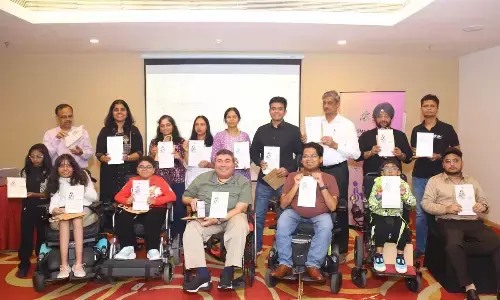IISC, ISRO make device to conduct biological experiments in outer space

IISC, ISRO make device to conduct biological experiments in outer space
In a major breakthrough for India, the Indian Institute of Science (IISC) and the Indian Space Research Organisation have developed a device to conduct biological experiments in outer space.
Bengaluru: In a major breakthrough for India, the Indian Institute of Science (IISC) and the Indian Space Research Organisation have developed a device to conduct biological experiments in outer space.
The study was published in Acta Astronautica, to depict how the device was utilised to activate and track the growth of a bacterium called Sporosarcina pasteurii with limited human involvement.
The device uses both LED and photodiode sensors to track bacterial growth by measuring the optical density or scattering of light. There are separate compartments for different experiments. Each compartment has a chamber where bacteria is suspended in a sucrose solution and nutrient medium is mixed in to start growing with the help of a remote switch.
Data from each compartment is collected and stored. Three of the compartments can be combined to form a single cartridge. Researchers think that four of such cartridges can be transported in a spacecraft and they will be able to carry out 12 independent experiments in total.
"It has to be completely self-contained," points out Koushik Viswanathan, Assistant Professor in the Department of Mechanical Engineering and a senior author of the study. "Besides, you can't simply expect the same operating conditions as you would in a normal laboratory setting … and you can't have something that guzzles 500W, for example." . Each cartridge consumes just under 1W of power.
The key objective was to develop something that would help researchers study the reaction of microorganisms in outer space. The researcher also had to develop a device that will completely be automated and consumes less amount of energy. The team also wanted to create a device that could be easily used by other researchers to perform experiments on other kinds of microorganisms.
Aloke Kumar, Associate Professor in the Department of Mechanical Engineering and a senior author said that another challenge faced by the team was to ensure that the LED does not generate too much heat causing changes in bacterial growth." When India is embarking on its space mission, we want to create a homemade solution," said Aloke Kumar. He confirmed that though they have collaborations with ISRO, they haven't conducted any experiments in outer space yet.
The next step is to improve on the physical capacity of the device and improve its performance in stress like vibrations and acceleration caused due to gravity.

















